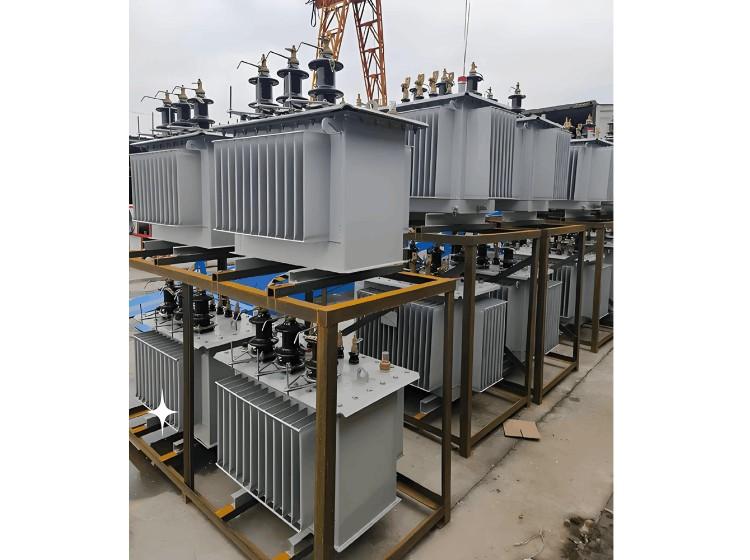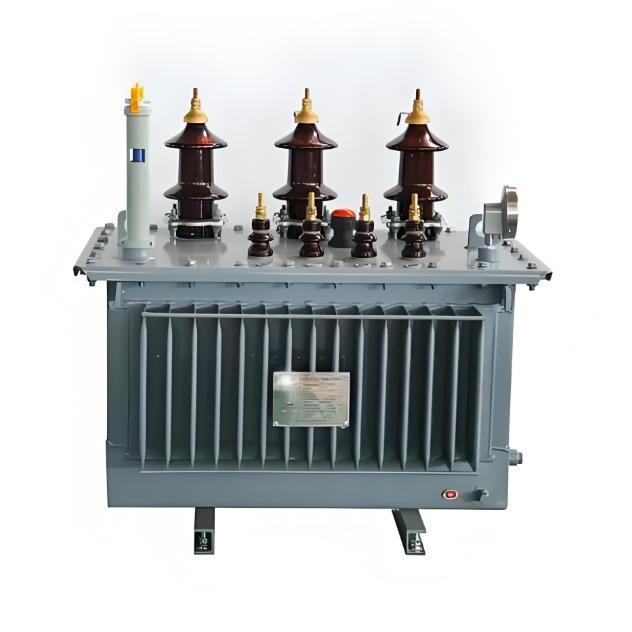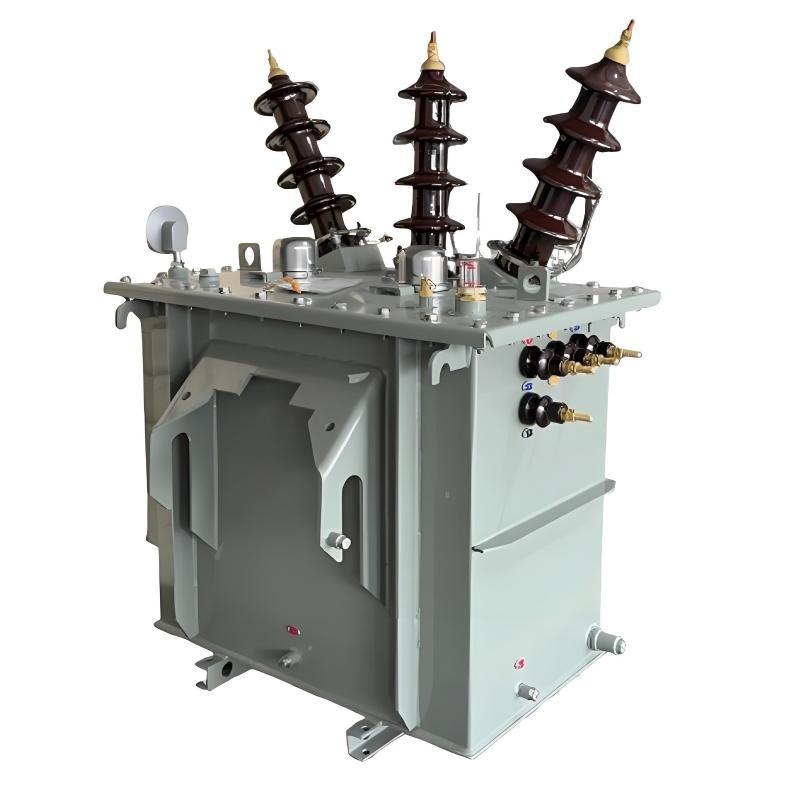Pamilihan ug Pag-configure sa Transformer
1. Importansya sa Pamilihan ug Pag-configure sa Transformer
Ang mga transformer naglakip og importante nga papel sa sistema sa kuryente. Sila moguba sa nivel sa voltaje aron mapasabot sa lain-lain nga pangangailihan, nahimo ang pagpadala ug pagdistribute sa gikinahanglan nga kuryente mula sa mga planta sa kuryente. Ang dili maayo nga pamilihan o pag-configure sa transformer mahimong magresulta sa serius nga problema. Pwede masulti, kon ang kapasidad dili matagbayan, ang transformer dili makapuyo sa konektado nga load, resulta sa pagbaba sa voltage ug epekto sa performance sa mga equipment—ang mga industriyal nga makina mahimong mobati o mobati pa. Sa uban ka banda, ang pagpili og oversized nga unit magresulta sa sayop sa resource ug pagtaas sa gastos. Kini nga rason, ang pagpili og husto nga modelo sa transformer ug ang maayo nga pag-configure niini kay importante aron mapatunay ug maayo nga operasyon sa sistema sa kuryente.
2. Key Parameters para sa Pagpili sa Transformer
(1) Kapasidad
Ang kapasidad sa transformer dapat matukoy batas sa aktwal nga demand sa load. Unsa mao ang unang buhaton mao ang pagkuha sa total nga konektado nga load pinaagi sa pagsumar sa mga rating sa power sa tanang electrical equipment. Pagkatapos, i-allow ang future expansion. Pwede masulti, kon ang usa ka komunidad sa balay may total nga load nga 500 kW, isip ang potensyal nga addition sama sa electric vehicle charging stations, ang transformer nga may gamay nga taas nga kapasidad—sama sa 630 kVA—dapat ipili. Kini nagtugot sa reliable nga operasyon sa peak demand o panahon sa pagdagdag og bag-ong load, naghulad sa overload-related failures.
(2) Voltage Level
Ang nivel sa voltage kinahanglan magmatch sa overall nga sistema sa kuryente. Ang common nga voltage levels sama sa 10 kV, 35 kV, ug 110 kV. Para sa low-voltage nga aplikasyon sama sa household appliances o small industrial equipment, ang 10 kV transformer kasagaran gigamit aron mapadami ang high voltage sa usable levels. Para sa large-scale nga industriyal nga facilities o long-distance power transmission, ang mas taas nga voltage sama sa 35 kV o higayon pa mahimong gikinahanglan. Pwede masulti, ang usa ka large mining operation nga may high-power equipment nga wala sa dako sa mga substation mahimong maggamit og 35 kV transformer aron mapahimulos ang transmission losses.
(3) Numero sa Phase
Ang mga transformer adunay single-phase ug three-phase configurations. Ang single-phase units kasagaran gigamit sa small-capacity nga aplikasyon nga may lower reliability requirements, sama sa lighting circuits. Ang three-phase transformers giwagtang sa industriyal nga plants, commercial buildings, ug residential complexes tungod sa ilang mas taas nga efficiency ug mas stable nga power delivery. Pwede masulti, ang factories nga gigamit og three-phase motors ug lighting nagbenepisyo gikan sa three-phase transformers, nga naghatag og mas taas nga kapasidad ug mas maayo nga adaptability sa iba't ibang scale sa load.

3. Environmental Factors sa Pag-configure sa Transformer
(1) Temperature
Ang ambient temperature daghan kaayo molihok sa performance sa transformer. Ang mataas nga temperatura nagpataas sa winding resistance, nagpataas sa copper losses ug nag-accelerate sa insulation aging. Sa hot climates, ang mga transformer nga may superior nga cooling performance dapat ipili. Pwede masulti, ang oil-immersed forced-air cooled transformers o dry-type transformers nga may forced ventilation ideal para sa outdoor substations sa tropical regions. Kini nga design nag-improve sa heat dissipation pinaagi sa fans o improved airflow. Sa cold regions, wala man daghan ang thermal stress, pero lisudon ang increased oil viscosity, nga maaaring mag-impose sa cooling. Ang appropriate nga cooling methods dapat gipili aron mapatunay ang reliable nga operasyon.
(2) Humidity
Ang mataas nga humidity nagdegrade sa insulation performance. Ang moisture infiltration nagbaba sa insulation resistance ug nagpataas sa risk sa leakage current—espesyalmente sa dry-type transformers. Sa humid environments sama sa coastal areas o damp indoor spaces, ang moisture-resistant models recommended. Ang dry-type units mahimo magamit hydrophobic insulation materials o special varnishes aron mapahimulos ang moisture resistance. Ang oil-filled transformers kinahanglan tight sealing, regular nga oil level checks, ug moisture monitoring aron mapahimulos ang performance degradation.
(3) Altitude
Kon ang altitude naaasenso, ang air density nagbaba, nagbaba sa cooling efficiency ug dielectric strength. Kasagaran, para sa bawat 100 meters above sea level, ang output capacity sa transformer dapat derated ngadto sa humoltog 1%. Sa 2,000 meters altitude, pwebe, ang rated capacity kinahanglan adjusted downward, o ang high-altitude-specific transformer dapat ipili. Ang mga units nga giwagtang adunay enhanced insulation ug optimized cooling structures aron mapatunay ang safe ug reliable nga operasyon sa thin-air conditions.
4. Pagpili sa Transformer para sa Iba't Ibang Aplikasyon
(1) Residential Communities
Ang residential areas primary serve household loads sama sa lighting, air conditioning, TVs, ug refrigerators. Ang load distribution kasagaran scattered pero peaks sa evening hours. Ang three-phase distribution transformers commonly used. Ang capacity determined by the number and type of households:
Medium-rise apartments: ~400–600 kVA per 1,000 households
High-rise buildings: ~800–1,200 kVA per 1,000 households
Pwede masulti, ang community nga may 1,000 medium-rise ug 1,000 high-rise units may require a ~1,000 kVA three-phase transformer. Tungod sa noise sensitivity, ang dry-type transformers preferred—they operate quietly ug minimize disturbance sa residents.
(2) Industrial Plants
Ang industrial facilities host diverse, high-power equipment sama sa motors, welders, ug furnaces, uban sa fluctuating loads. Ang small factories nga may modest power needs (e.g., a 200 kW mechanical workshop) can use 10 kV oil-immersed or dry-type transformers (e.g., 315 kVA). Ang large plants sama sa steel or cement factories require massive power supplies, often necessitating 35 kV or higher systems with capacities reaching several MVA. Pwede masulti, ang steel mill nga may tens of MW demand may need a 10 MVA+ 35 kV transformer. Tungod sa harsh industrial environments (dust, oil), ang transformers should have high IP ratings ug robust cooling—oil-filled units with sealed tanks ug extra radiators, or fully enclosed dry-types, are ideal choices.
(3) Commercial Buildings
Ang commercial buildings—including shopping malls, office towers, ug hotels—have varied loads. Ang malls have extensive lighting, HVAC, elevators, ug tenant equipment; offices mainly use computers ug lighting; hotels add guest room ug kitchen loads. Ang three-phase distribution transformers standard. Para sa 10,000 m² mall requiring 800–1,200 kVA, a 1,000 kVA dry-type transformer suitable. Tungod sa high occupancy ug reliability demands, ang transformers must be dependable ug easy to maintain. Ang dry-types favored for their low maintenance, safety, ug compact footprint, allowing indoor installation without excessive space usage.
5. Economic Analysis sa Pagpili sa Transformer
(1) Equipment Procurement Cost
Ang prices sa transformer vary significantly by capacity, voltage class, ug technology. Ang larger, higher-voltage, or advanced models cost more. A 100 kVA dry-type unit may cost tens of thousands of dollars, while a 10 MVA 110 kV oil-filled transformer could exceed hundreds of thousands. Over-specifying increases initial investment ug wastes resources; under-sizing risks future upgrades ug additional costs. Optimal selection balances performance ug budget to achieve the best value.
(2) Operating Costs
Ang operating costs include energy consumption ug maintenance. Ang energy loss varies by model—energy-efficient transformers consume less power. Though initially more expensive, they save on electricity over time. Pwede masulti, ang standard transformer consuming 100,000 kWh/year versus an efficient model using only 80,000 kWh/year saves 20,000 kWh annually. At 0.50/kWh, this equals $10,000 in annual savings. Maintenance costs differ too: dry-types require less upkeep, while oil-filled units need regular oil testing ug topping-up, increasing labor ug material expenses. Long-term operating costs should be factored into selection decisions.
(3) Lifecycle Cost
Ang lifecycle cost includes procurement, installation, operation, maintenance, ug decommissioning expenses. A cheaper transformer with high losses ug frequent maintenance may cost more over its lifetime than a pricier, efficient, low-maintenance model. Comprehensive lifecycle analysis helps identify the most cost-effective solution. Pwede masulti, a slightly more expensive transformer with superior efficiency ug reliability may yield significant savings over 20–30 years. Thus, economic evaluation should consider total ownership cost, not just upfront price.
Conclusion
Ang pamilihan ug pag-configure sa transformer mao ang complex yet vital process. Kini requires careful consideration of electrical parameters, environmental conditions, application scenarios, ug economic factors. Only by choosing the right transformer ug configuring it appropriately can we ensure stable power system operation, improve energy efficiency, reduce costs, ug provide reliable electricity for homes ug industries alike.























